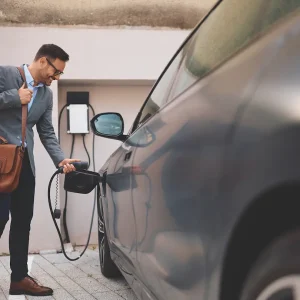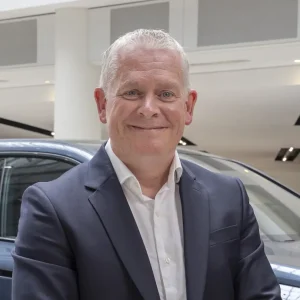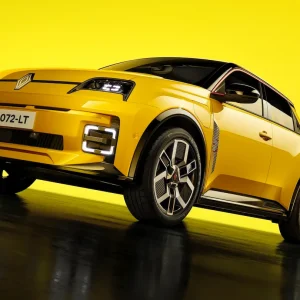Whether you’re a transport manager, a safety professional or a company director, fleet safety is something that you can’t afford to ignore.
Due to heightened safety and crash testing standards, vehicle performance in crash tests is now an important component of the selection process for fleets. But what requirements must manufacturers now follow to make the grade in crash tests?

Constant change
Euro NCAP stands for European New Car Assessment Programme: it’s the body that provides information on the safety of new cars, then tests the most important safety systems based on objective criteria, which it derives from real-world crash data.
NCAP’s secretary-general, Michiel van Ratingen has observed a wealth of change in the automotive industry. Over the past ten years, he has overseen various changes to the Euro NCAP testing standards, as vehicles have transitioned towards increasingly advanced safety technologies.
“Unlike price, mileage and other aspects of a car, the safety performance is a hidden property that consumers cannot easily find out by themselves,” he explains.
Therefore, Van Ratingen says, without the transparent and objective information published by Euro NCAP, fleets would have to rely entirely on manufacturers information, which – by default – is positive about safety, but often incomplete and biased towards the systems that the manufacturer offers.

“A true comparison between brands or models is impossible without public ratings,” explains Van Ratingen. “That’s why we as an organisation exist, to provide customers with information on how safe the cars really are.”
Similarly, Thatcham employs experts in vehicle safety technology, vehicle security and crash repair. The two organisations work closely together, and the research Thatcham undertakes is used to define minimum safety performance specifications, which is in turn used by Euro NCAP to assess vehicles.
“It all goes into the Euro NCAP star rating system – and we hope that by now fleet managers know that a car with a five-star rating is a safe choice,” explains Matthew Avery, director of research
at Thatcham.
Education is necessary
The organisations have seen multiple changes in the way they need to operate and encourage safety over the past few years. In 2009, Euro NCAP’s tests began to include more advanced technology to promote the uptake of emerging systems with life-saving potential.
Fleet procurement managers can use star ratings to compare cars in a specific category and to populate a shortlist of company cars, as part of a corporate social
responsibility policy.
Avery tells BusinessCar that Thatcham works to constantly enhance the make-up of the star rating system to create exacting safety standards for manufacturers to meet. He says that its work, as well as that of Euro NCAP, is vital. “Fleets account for half of all new vehicle sales, so putting the safest cars onto UK roads in volume is essential – not least because those vehicles will eventually migrate into the private car market,” Avery says.
Unfortunately, he explains, many fleets look at the short term and still consider advanced systems like autonomous emergency braking (AEB) as unnecessary extra costs, despite the fact that these systems effectively save lives.

Avery doesn’t believe safety is currently high up enough on the agenda in fleet choice lists. “Unfortunately, the bottom line is the key driver. The lack of standard-fit safety technology exacerbates the issue. Many safety features come as an additional option; they are then dismissed from a cost perspective,” he says.
It’s one thing convincing fleet managers to buy the safest cars, and another to ensure that their drivers actually use the safety systems. “Of course, drivers must be adequately informed about the systems in their car; however, this still does not mean they will use all the systems,” says NCAP’s
Van Ratingen.
To tackle this, Euro NCAP promotes safety systems that are switched on by default, challenging the vehicle manufacturers to deliver robust systems that continuously support the drive without unnecessarily annoying or confusing them. Thatcham has similar ideas. “We always push for safety to be built into the vehicle,” says Avery.
While high-performance body structures, restraints and airbag systems ensure that the fundamental components of modern vehicle safety cannot be switched off, many systems can. “These systems, such as automated cruise control, are beneficial from a safety perspective – and we would like to see more fleet managers undertaking training to help press home the benefits to their drivers,” Avery explains.
Raising the bar on safety
Every few years, Euro NCAP introduces a new roadmap that projects how the star system will evolve in the years ahead. The latest roadmap was released this September and addressed tertiary safety for the first time. This means that from 2022, a reward will be given to child presence detection systems that can detect a child left alone in a car, and alert the owner and/or the emergency services, to help prevent fatalities
from heatstroke.
Updating the system with these changes is always a careful balancing act, says Van Ratingen. “For the system to have value, it must reward the front runners in the industry, but not discourage the ones that are following.”

Introducing new technology into the star rating system must be done at the time that the technology is mature and has some market penetration. On the other hand, if updates come too late, the safety information will not influence the market much, Van Ratingen notes.
Since 2014, AEB has played a big role in the tests. Successive updates have pushed for higher capability, from avoiding rear-end crashes to gradually detecting pedestrians and cyclists in 2018.
From the start of 2018, a vehicle must have some form of AEB on board to achieve a Euro NCAP five-star rating.
“AEB has huge potential to save lives,” says Avery. “In time, we will look back on the advent of AEB in the same way that we do the seatbelt, and wonder how a technology with such potential to make roads safer, was ever anything but
standard fit.”
Of course, automated driving is also a big catalyst for vehicle safety improvement. “Automation offers huge benefits in casualty reduction. Remove human error and bad driver habits such as tailgating and you get far safer roads,” Avery says.
At the moment, though, Euro NCAP is focusing on assisted driving technology, and is developing an information programme around the hand-over from and to drivers, status information, and the minimum-risk manoeuvres in emergency situations, to help consumers better understand the limitations of these systems. Van Ratingen says the company aims to have its first publications around autonomous driving technology out
by 2018-19.

Thatcham’s first forays into the assessment of automated systems will begin in 2018, according to Avery. The organisation will be testing AEB systems’ ability to detect cyclists and perform at night, and will be enhancing the test protocols for lane-support systems, to assess their ability to prevent ‘run off road’ and head-on collisions. The organisation will set out new criteria for a truly automated vehicle and will assess any car marketed as automated against that criteria.
“It is crucial that there is a clear definition of what constitutes an automated vehicle going forward,” says Avery. “Regulators and insurers require this to classify and insure vehicles appropriately, while consumers need to understand the functionality and capability of the vehicle, and their own responsibilities.”
With the advent of increasingly sophisticated driving technologies and even automated cars, the role of organisations such as Euro NCAP and Thatcham will only increase in importance.
“We will continue to encourage carmakers to increase the level of standard-fit safety technology available on new vehicles,” says Avery. “As test procedures evolve, we are, in effect, forcing vehicle manufacturers’ hands by making standard fitting a prerequisite of a five-star rating. The current focus has been AEB, but we will continue to push other advanced drive assistance technologies in a similar fashion as time goes on.”





